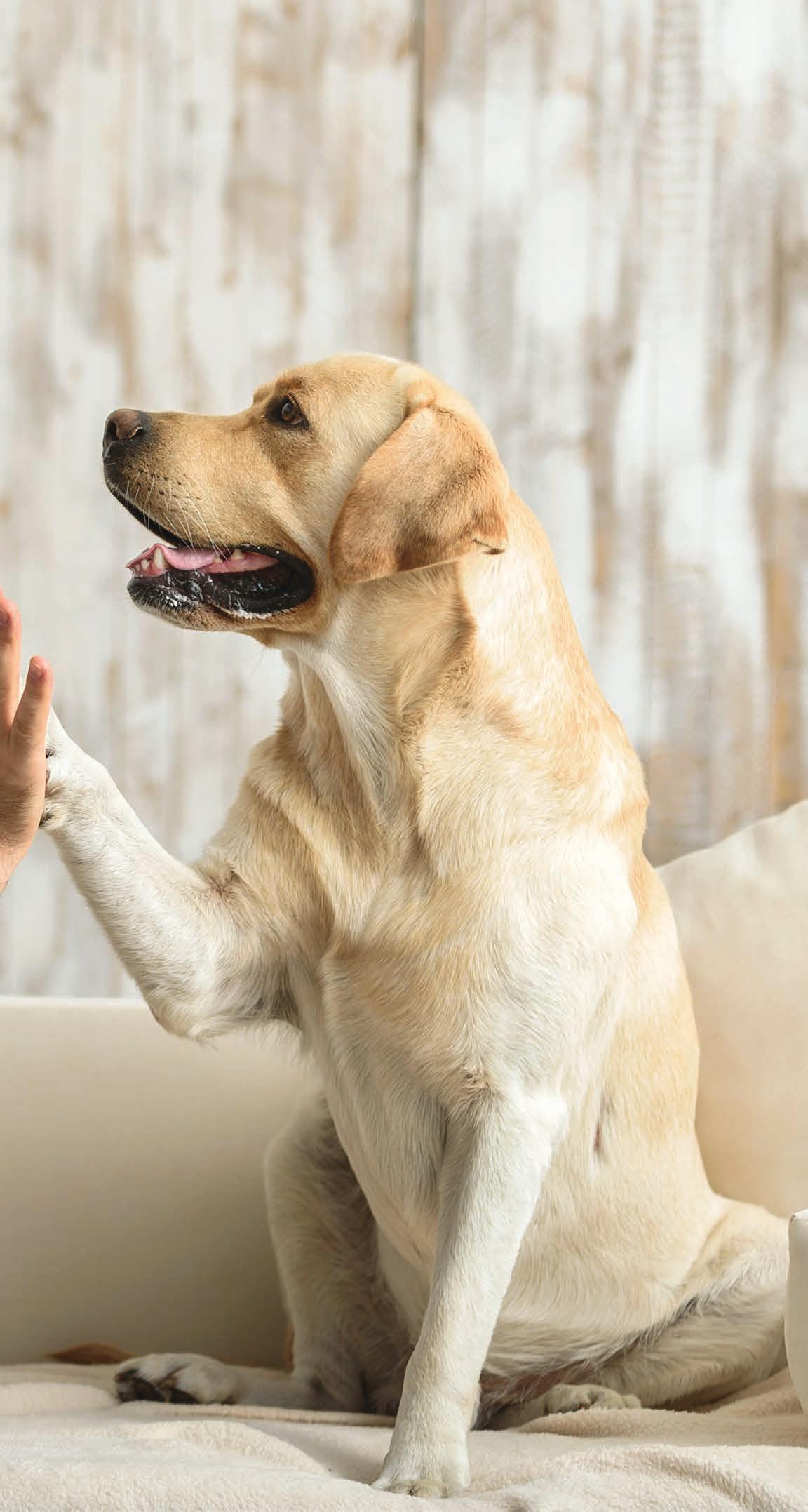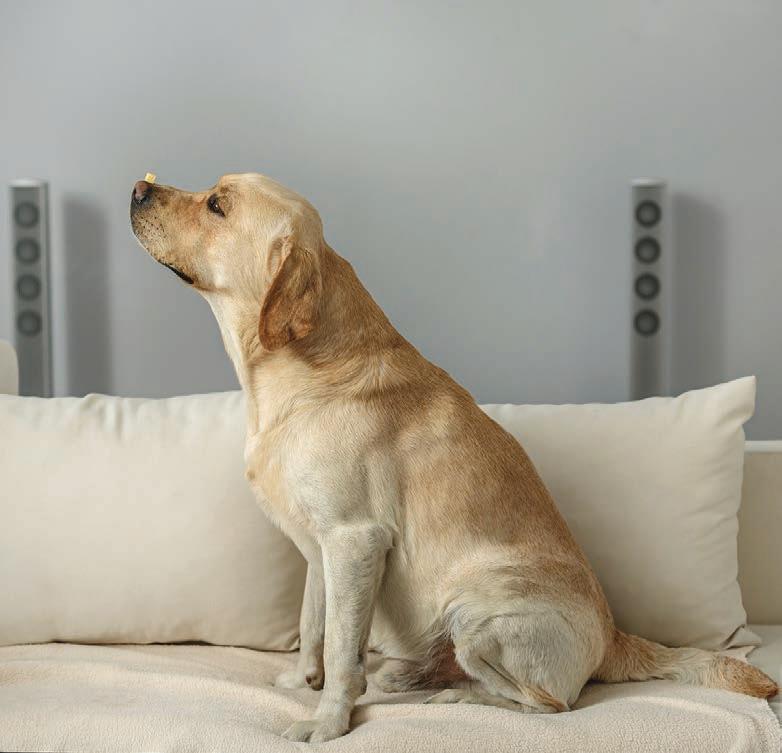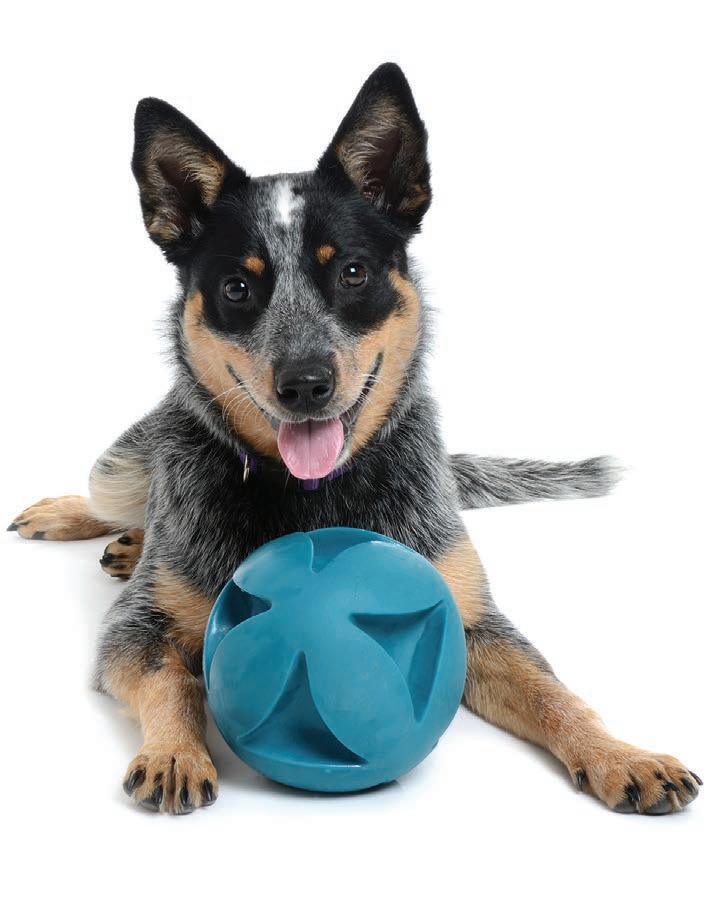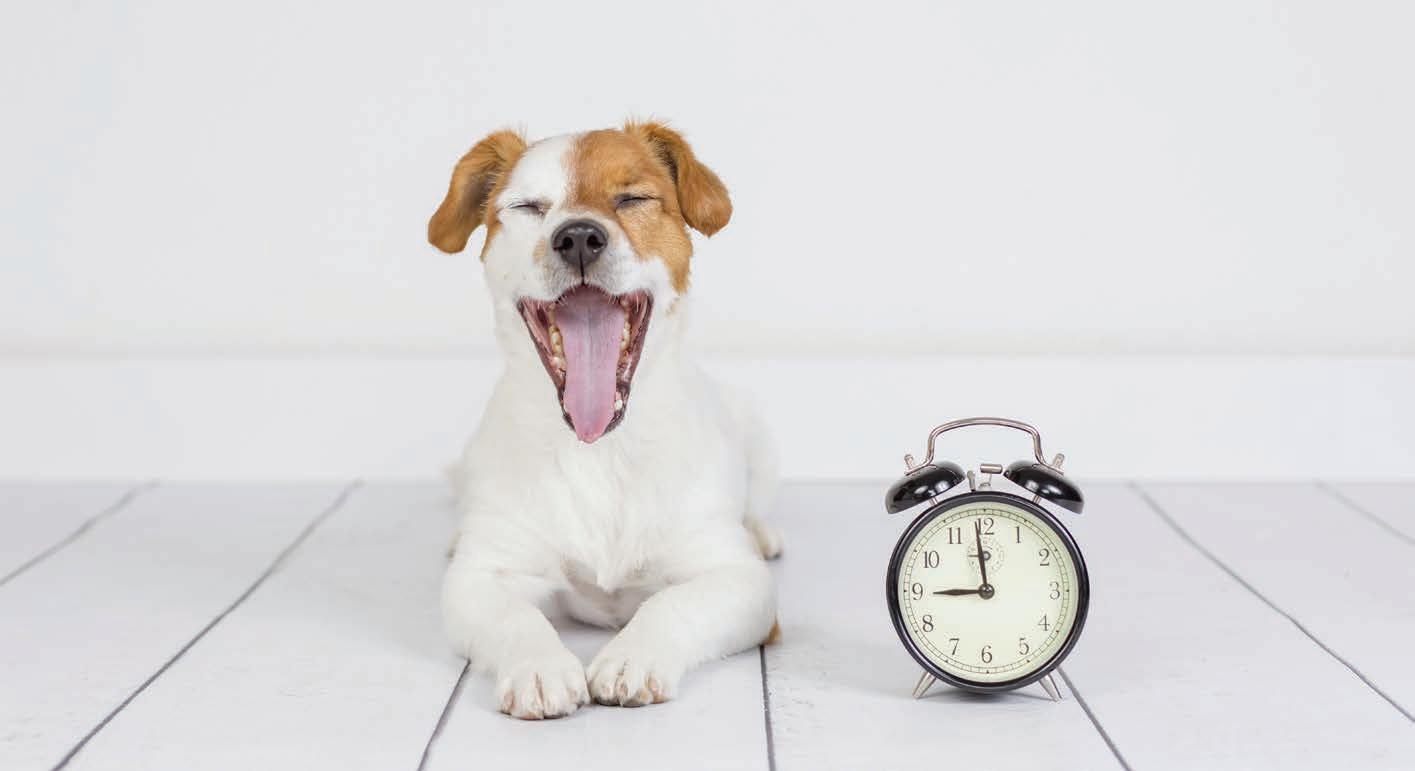
5 minute read
Make Dog Training Easier
Make Dog Training Easier

Advertisement
By Lori Carman, Dream Dogs and Julie Schmitt, Out N’ About Dog Training (of San Diego)
You’ve worked all day, run errands, dropped off a kid or two to after school activities … now you’re tired, but your dog still needs training. What can you possibly do to make it easier? The answers are easy.
First, you need to understand that all interactions with your dog or puppy are a form of training or learning for them. So be very careful how you react to your dog’s behavior, both good and bad. For example, if your dog jumps on you and you pet him to “calm him down,” thinking you’ll make the bad behavior go away, that’s a mistake. You’ve just reinforced the behavior, and in essence, you’re training your dog to jump on you. If you allow your puppy to chew on your fingers because it’s cute, it doesn’t really hurt, and it’s easier than finding him another more acceptable activity, then you’re training him to chew on your fingers. And very soon, it won’t be cute and it will definitely hurt.
But don’t fret—we have 10 easy ways for you to make dog training easier and a natural part of your relationship with your dog.
1. BE PROACTIVE, NOT REACTIVE
Each situation is different, but here are a few examples. If you know your dog is going to chew on you when you sit down, offer him something else to chew on, like a Kong stuffed with peanut butter or a bully stick. If your dog jumps on guests, have treats in your hand before you open the door, so you can scatter treats on the ground behind you as your guests walk in. Bad behaviors should first be replaced with different behaviors.

2. BE PREPARED
Simple, but so hard to do. Pre-stuff a few Kongs and place them in the freezer so they’re ready to go when you need them. Keep “cookie bowls” around the house (but out of your dog’s reach), so you can easily reward good behavior. When you reward your dog for a behavior, it is more likely to happen again. For the jumpy dog, keep a leash near the door so you can easily clip it on before your guests walk in. Use a baby gate and offer a planned exercise for time outs if you need to.

3. CONTROL YOUR ENVIRONMENT
For your dog, distractions are anything that makes a noise, has a smell, or moves. Yep, pretty much the whole world is a distraction. If your dog goes nuts when he sees a golfer, and you live on a golf course, close your blinds. Take away the visual triggers, so you can start your training session with a calm dog. If your dog barks when they see people on a walk, find a place with fewer people who keep their distance so you can teach your dog to be calm. Start training behaviors in a neutral environment before trying them in a busy park.
4. USE PROPER EQUIPMENT
Duct tape is not the right tool to hold your house together. For that, you need nails and screws and tough adhesives. In the same way, your dog needs you to have the proper tools to train him effectively. Have Kongs, a variety of chew toys, and a crate available. Have treats that your dog really enjoys readily available in a treat pouch or the cookie bowl. Have your dog on a 6-ft leash that is comfortable for you to hold (no chain or retractable leashes) and wearing a front-clip harness, such as a Wonder Walker or a head collar.

5. HAVE FUN
If you’re not having fun, then neither is your dog. It’s okay to play and have fun while training—in fact, your dog will learn faster if he’s having fun!

6. KEEP TRAINING SHORT
Training sessions should be fast and fun, about 3 to 5 minutes per session. Use a timer (or ask Alexa to start one for you). By providing only a short period of time for your dog to respond to your request, you’re teaching him to act fast to earn rewards. This enhances the overall value you’ll get out of a training session with your dog. You always want to leave the training session on a high note. Because work is fun, and fun is work.
7. BE FLEXIBLE
There are 101 ways to train any behavior. If what you’re trying isn’t working, then please stop! Regroup, try to figure out why it isn’t working, and adjust your approach in your next training session. Be flexible enough to walk away from training a certain behavior. If you’re having a hard time reaching the goal, make the goal easier, so both you and your dog can achieve success.
8. KNOW THE MOTIVATION
Watch carefully and find out what your dog likes—don’t just assume you know what he likes. Some dogs are more toy motivated than food motivated. If that’s your dog, keep his favorite toy to use a reward. If you dog doesn’t care much about toys and doesn’t seem to be a foodie, try new and different types of treats. If your attention is your dog’s main motivator, only give him affection for good behavior.
9. SOCIALIZE PROPERLY
If you have a puppy, training is much easier with proper socialization to people, other dogs, places, sounds, and objects. The proper time to do this is during your puppy’s fear period—a very short window, from 8 weeks to 16 weeks. You can properly socialize your puppy, even if they don’t have all their shots. Be smart about it. Find a puppy socialization class that is clean and safe. Look at it this way: can you imagine not taking your infant child with you, just because he or she isn’t fully vaccinated? Just make good choices about where you and your puppy go.
10. NOTHING IS FREE
Teach your dog to earn what he craves. In other words, don’t hand out your love or your treats for free. Ask your dog to sit for anything at all that you know he wants. If he doesn’t sit, then you don’t pet him or give him a treat (or even eye contact). Walk away from him. The sitting position is incompatible with most bad behaviors, so if your dog learns he’ll be rewarded for sitting and being still, he’ll be willing to do it more often.
And we can’t resist one more bonus tip: always be willing to seek the advice and experience of a dog training professional!
Lori Wainio-Carman, VSPDT, professional dog trainer and owner of Dream Dogs, has been successfully training for more than 20 years. 760-899-7272, dreamdogs.com, Positively.com Julie Schmitt, VSPDT, CPDT and owner of Out N’ About Dog Training, has been successfully training dogs for more than 25 years. 619-417-2368, outnaboutdogtraining.com, Positively.com

